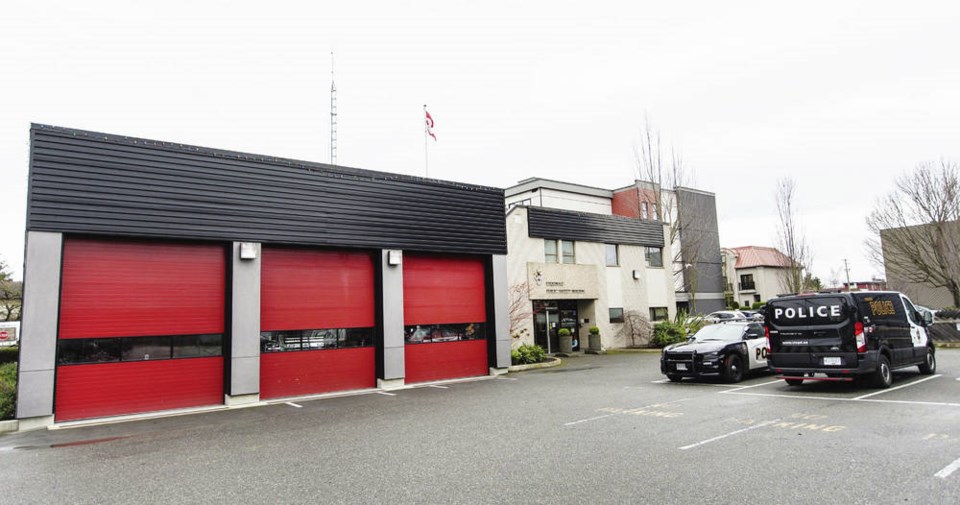Esquimalt’s new $42 million public safety building is going ahead.
Exactly when it will be built and what the final design will look like are still to be nailed down. First, the town council had to get voters’ approval to borrow $35 million of the cost, which it did in a process that wrapped up Monday.
The structure, which will house police, fire and other functions, will rise on the site of the existing aging, cramped building and an adjacent parking lot off Esquimalt Road.
The occupants of the current premises will have to relocate while the new building is constructed. The thought is the fire department will go into temporary buildings beside Archie Browning centre and the police will go where the library now sits, under town hall. (A new library branch is to open in Esquimalt Town Square as early as August.) Council won’t make more decisions until after consulting with the public, said Mayor Barb Desjardins.
Communicating with the public can be tricky during COVID, though, as council discovered when seeking the OK to borrow the $35 million (the other $7 million will come from the $17 million Esquimalt got from the Capital Regional District for hosting the McLoughlin Point sewage plant).
Instead of asking residents to vote in a referendum, council chose a process in which anyone who opposed the spending had to submit a form to town hall, either by email or on paper. Under the alternative approval process, as it is known, proposals automatically go ahead unless at least 10 per cent of eligible voters file objections. It’s a mechanism that has been widely used around B.C. since 2004, when the provincial government offered it to municipalities as an option.
The advantage of the process is that it’s much cheaper than staging a referendum (maybe $60,000 to $80,000 in Esquimalt’s case) particularly in years when there’s not already a civic election on which to piggyback. It’s also more COVID-safe than asking residents to vote in person.
The weakness is that it requires voters to be in touch with what’s going on at the municipal hall. People can’t be expected to voice their objections to a proposal if they don’t know the proposal has been proposed. (Got that?) Desjardins said she heard from some people who felt surprised by the public safety building initiative.
The township spread word via print ads, social media, its website and in a newsletter distributed to residents, but some told the mayor there should have been a specific mail-out for such a big project.
You never know how much of an information effort is enough, Desjardins said. Maybe there’s no such thing as too much, she added.
In reality, getting voters to wade into municipal matters is never that easy. Even with a project as contentious as Victoria’s Johnson Street Bridge replacement, only 26 per cent of eligible voters turned out when it was presented to the public for approval in 2010, and that was when the referendum was held in conjunction with a byelection, too.
It’s even harder to engage people during a pandemic, when both the public and the media are preoccupied with other questions, most of them having to do with some variation of “when can I get my vaccine and see my mother/go to the movies/enjoy a furtive workplace romance again?”
By Monday’s deadline, just 684 had registered their objections to the public safety building borrowing, half the 1,380 that would have been needed to stall the project.
Council will get a staff report on the next steps, including building design and rezoning, on May 17.
On May 1, I wrote about a bicycle that someone had left on Gorge Road at Harriet as a memorial to a cyclist who died after a crash there in November. It was painted all white, save for the orange flowers growing from the earth-filled basket on its handlebars. Today, the bike is still there but basket is empty. It would be nice to think someone just moved the flowers somewhere they could flourish.
As several readers pointed out, the placement of so-called ghost bikes goes back to the early 2000s. The white bicycles are found in places where cyclists have been killed or injured, a reminder of the vulnerability of riders. One was erected on West Saanich Road at Wallace Drive after an inattentive driver turned left into the path of a 19-year-old cyclist, killing him, in 2004.
We could all be more careful. Everybody just wants to get home safely.



